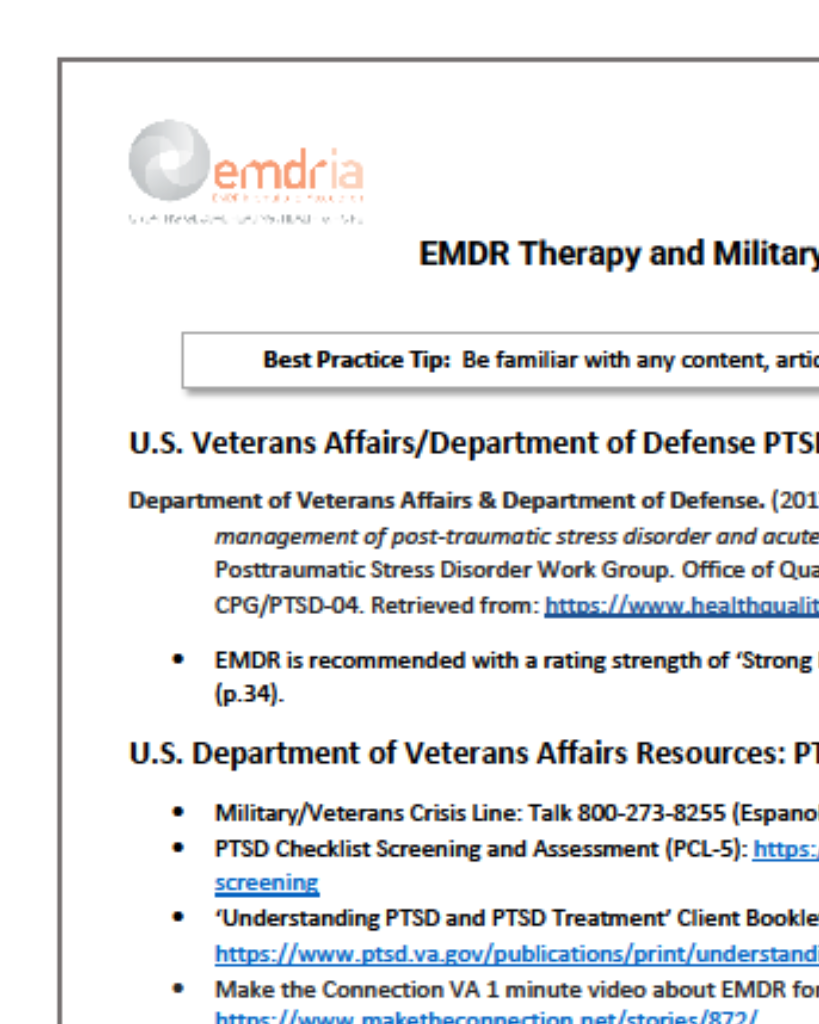I feel pain, not pressure: A personal and methodological reflection on pain during cesarean delivery
An experience-based article recounting pain during cesarean delivery, resulting PTSD, EMDR treatment, and a review of the evolution of cesarean delivery-based pain literature.
Article Abstract
“Cesarean delivery is one of the most common operations in the world, and a growing number of cesarean deliveries are performed in the United States each year. Despite the operation’s relative safety, pain during cesarean delivery is common, ranging from 1.2% of births to more than a third of births depending on the institution, how pain during cesarean delivery is measured, and the type of analgesia used. The intensity of pain during a cesarean delivery varies as well, and evidence suggests that its frequency may be underreported. Yet, intraoperative pain poses serious risks for mothers’ wellbeing, particularly because it can trigger childbirth-related posttraumatic stress disorder, which, in turn, hurts mothers psychologically and physiologically and impairs their capacity to bond with their babies. Despite how common pain during cesarean delivery is and in spite of its consequences, there is a lack of widespread agreement on how to prevent or to treat intraoperative pain and few examples of patient-narrated experiences of it. In this Special Article, I sought to contribute my own experience with intraoperative pain during a cesarean delivery, the development of childbirth-related posttraumatic stress disorder, and the use of Eye Movement Desensitization and Reprocessing for treatment. I also reviewed the evolution of the literature on pain during cesarean delivery from surrogate markers of pain to studies that focused on patients’ reports of pain during cesarean delivery, a methodological shift that will expand the identification and treatment of intraoperative pain. I introduce geographer Nancy Hiemstra’s notion of periscoping, a method used to identify problems or voices that may be hidden from view and propose that such methods, although useful, may miss capturing such subjective experiences as pain. I then propose that the recent focus on patient-reported pain is emblematic of a paradigm shift in maternal care to devote greater attention to women’s pain. The implications of this paradigm shift might include not only addressing intraoperative pain but also present clinicians and researchers with an opportunity to focus on other common but similarly overlooked aspects of cesarean birth that may benefit from patient-centered inquiry and methodological approaches. These include the difficulties of postpartum recovery and the limitations that cesarean deliveries can place on family size. I close by highlighting the gap between cesarean delivery as a routine procedure and patients’ experiences of it—an opportunity for clinicians to recognize and address, through prenatal and postpartum education, the short- and long-term major and minor consequences of cesarean birth.”
—Description from publisher
Article Access
Purchase/Subscription Required
Somerstein, R. (2025). I feel pain, not pressure: A personal and methodological reflection on pain during cesarean delivery. American Journal of Obstetrics & Gynecology, Online First. https://doi.org/10.1016/j.ajog.2025.06.036
Date
August 16, 2025
Creator(s)
Rachel Somerstein
Topics
Pain/Chronic Pain, Pregnancy/Perinatal
Publisher
Elsevier
Rights
© 2025 Elsevier Inc. All rights are reserved, including those for text and data mining, AI training, and similar technologies.
APA Citation
Somerstein, R. (2025). I feel pain, not pressure: A personal and methodological reflection on pain during cesarean delivery. American Journal of Obstetrics & Gynecology, Online First. https://doi.org/10.1016/j.ajog.2025.06.036
Audience
EMDR Therapists, Other Mental Health Professionals
Language
English
Content Type
Article
Access Type
External Resource





